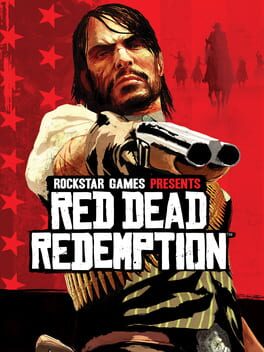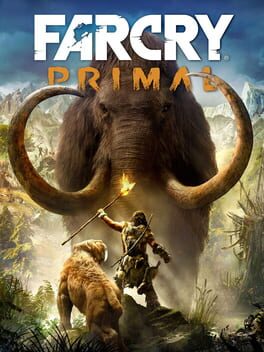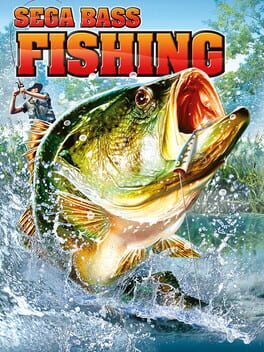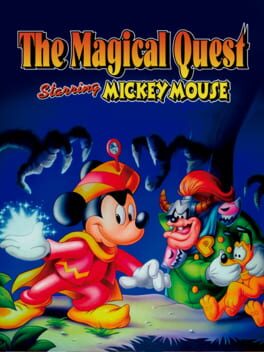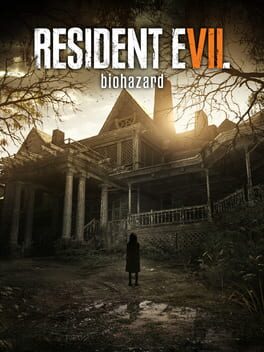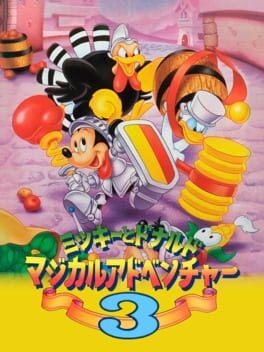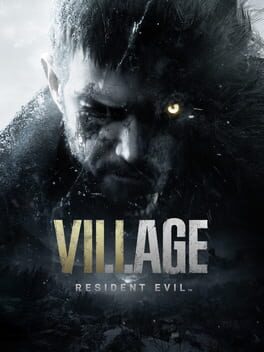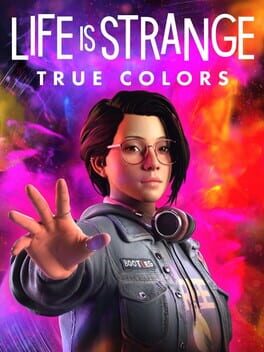410 Reviews liked by SanjayRamesh
Red Dead Redemption
2010
Red Dead Redemption
2010
Red Dead Redemption
2010
Red Dead Redemption
2010
Far Cry: Primal
2016
Currently feeling very angry at how this game ends. Genuinely feel like I've wasted 80 hours of my life to reach a non-conclusion.
Once I completed the final region of the game, I got a little pop-up that says "You've now completed every region, but you have plenty more to do..." and it lists a long list of side shit I've not done. Apparently once I do this, I'll unlock The Last Chapter - the game's actual ending. What the fuck is this game design? I've given it 80+ hours and completed all major tasks, I don't want to spend another 50 hours hunting down every Order member, completing every nonsensical magic trip, and I certainly don't want to spend any more time in freaking Asgard.
Treat your audience's time with respect. I'm done with this, I'll just watch The Last Chapter on YouTube.
Once I completed the final region of the game, I got a little pop-up that says "You've now completed every region, but you have plenty more to do..." and it lists a long list of side shit I've not done. Apparently once I do this, I'll unlock The Last Chapter - the game's actual ending. What the fuck is this game design? I've given it 80+ hours and completed all major tasks, I don't want to spend another 50 hours hunting down every Order member, completing every nonsensical magic trip, and I certainly don't want to spend any more time in freaking Asgard.
Treat your audience's time with respect. I'm done with this, I'll just watch The Last Chapter on YouTube.
Sega Bass Fishing
1997
Halo 3
2007
God Hand
2006
Before there was Oblivion with guns, there was Resident Evil 4 without guns. More so than with respect to even its emphasis on crowd control, dynamic difficulty scaling or abundance of contextual carpal tunnel generators, God Hand’s arguably most reminiscent of its spiritual cousin in terms of how forward-thinking it is.
An action game likes convenience. To be able to jump in and fight what you want, when you want with as little fluff as possible’s part of why DMC’s Bloody Palace (or equivalents) became a genre mainstay, why Bayonetta 3’s revamped chapter select system is probably the single most underappreciated feature of 2022 and why the not-infrequent complaint about Nioh having a level select menu is so mystifying. Play enough games from when this family tree was still in its relative infancy and you’ll likely realise how easy it is to take such features for granted, which is why it's so cool that God Hand had something like the Fighting Ring so early on in the genre’s history.
A practice area coupled with all sorts of bespoke combat encounters you can tackle and/or fail any number of times, totally free of consequence, would be a natural fit for any action game, but it’s especially great for God Hand because of how its equipment system works. There’s not just a litany of attacks at your disposal, each with their own distinct properties and niches, but you can also equip any of them in any order and assign them to any button. It’s an unprecedented degree of customisation that might’ve otherwise been overwhelming without an area like this, and which I’m not sure’s been matched before or since. The likes of The Wonderful 101, God of War 3 and DMC5 might let me switch from one weapon to any other in any order, but not even they let me build a moveset out of pimp slaps if I feel like it, purely because I can.
The draw of experimentation that comes with this is hampered a bit by certain rough patches – for example, multi-hit attacks occasionally feel disincentivised in a way that doesn’t seem intentional because of how frequently enemies block and counterattack as the difficulty level increases (especially on Hard where you’re permanently at the highest), while low profile moves which dodge enemies’ high attacks for some reason don’t avoid jumping grabs – but what helps keep the combat malleable despite these is the counterhit system. Interrupt an enemy or boss’ attack with one of your own and they’ll varyingly flinch, be stunned, get juggled or launched, even if none of those properties work on them normally. It creates an engaging sense of back-and-forth and ensures you’re never completely strapped for options no matter how suffocating the situation you find yourself in or which moves you've equipped, especially when taken in tandem with being able to cancel any of Gene’s attacks at any point with one of three different dodges (which, provided your thumbs can remain intact, is also particularly helpful for circumventing the aforementioned issues with multihit attacks).
On that point, God Hand’s handling of defence is something more games could probably stand to learn from. The Great Sensei is a sink or swim moment in this respect and, in my view, the embodiment of what makes it shine, stringing together high attacks, vertical attacks and crowd control in blistering succession that demands you have an iron grip on each of Gene’s dodges and what they’re for like no boss before or after him. He would still be infamously difficult because of all this in a vacuum, but I think part of why he’s such a challenge also stems from how many other games with real-time combat systems treat their (often singular) dodge as a one-size-fits-all invincibility bubble and how tough it can be to break the conditioning that that sort of standardisation instils. Lost Judgment is another 3D beat-‘em-up which plays excellently, but despite being 15 years God Hand’s junior on platforms multitudes more powerful, it can’t help but feel comparatively primitive whenever Yagami “evades” a sweep kick by ducking his head. In contrast, God Hand’s more nuanced combination of side/backward dodges and bobbing & weaving reminded me loosely of Soulcalibur, which on top of its counterhit system makes one wonder how much other action games might benefit from leaning into their common ground with fighting games.
Not all of God Hand’s boss fights or enemies utilise its mechanics equally well, the final boss in particular running the risk of jettisoning the player’s goodwill into the bin, but some scattershot ups and downs are to be expected when your game is so bonkers at every turn. It speaks to how entertaining its stages manage to be, both conceptually and in design, that you end the game with no further mechanics than what you start with and it never once feels stale. There’s an inherent excitement that comes with cramming so many clowns, demons, cowboys, Venetian canals, floating pyramids and other seemingly disparate ideas that you don’t know what to expect next; while some might be surprised at the fact that he considers Resident Evil 4 to be the opposite, it’ll likely shock nobody that Shinji Mikami feels that God Hand is the game with the most amount of himself in it. What results is no doubt chaotic, but more than worth looking past the imperfections of for experiencing what’s essentially his and a bunch of other loveable goofballs’ collective personality transcribed onto a disc, which also happens to be perhaps the only game that feels like an interactive version of an action film’s fight choreography.
If you happen to still have a PS2 lying around, I can attest that the ~80 gamerbux that used copies of this bad boy go for are worth it. You may not be you know who, but you’ll feel like it by the end.
An action game likes convenience. To be able to jump in and fight what you want, when you want with as little fluff as possible’s part of why DMC’s Bloody Palace (or equivalents) became a genre mainstay, why Bayonetta 3’s revamped chapter select system is probably the single most underappreciated feature of 2022 and why the not-infrequent complaint about Nioh having a level select menu is so mystifying. Play enough games from when this family tree was still in its relative infancy and you’ll likely realise how easy it is to take such features for granted, which is why it's so cool that God Hand had something like the Fighting Ring so early on in the genre’s history.
A practice area coupled with all sorts of bespoke combat encounters you can tackle and/or fail any number of times, totally free of consequence, would be a natural fit for any action game, but it’s especially great for God Hand because of how its equipment system works. There’s not just a litany of attacks at your disposal, each with their own distinct properties and niches, but you can also equip any of them in any order and assign them to any button. It’s an unprecedented degree of customisation that might’ve otherwise been overwhelming without an area like this, and which I’m not sure’s been matched before or since. The likes of The Wonderful 101, God of War 3 and DMC5 might let me switch from one weapon to any other in any order, but not even they let me build a moveset out of pimp slaps if I feel like it, purely because I can.
The draw of experimentation that comes with this is hampered a bit by certain rough patches – for example, multi-hit attacks occasionally feel disincentivised in a way that doesn’t seem intentional because of how frequently enemies block and counterattack as the difficulty level increases (especially on Hard where you’re permanently at the highest), while low profile moves which dodge enemies’ high attacks for some reason don’t avoid jumping grabs – but what helps keep the combat malleable despite these is the counterhit system. Interrupt an enemy or boss’ attack with one of your own and they’ll varyingly flinch, be stunned, get juggled or launched, even if none of those properties work on them normally. It creates an engaging sense of back-and-forth and ensures you’re never completely strapped for options no matter how suffocating the situation you find yourself in or which moves you've equipped, especially when taken in tandem with being able to cancel any of Gene’s attacks at any point with one of three different dodges (which, provided your thumbs can remain intact, is also particularly helpful for circumventing the aforementioned issues with multihit attacks).
On that point, God Hand’s handling of defence is something more games could probably stand to learn from. The Great Sensei is a sink or swim moment in this respect and, in my view, the embodiment of what makes it shine, stringing together high attacks, vertical attacks and crowd control in blistering succession that demands you have an iron grip on each of Gene’s dodges and what they’re for like no boss before or after him. He would still be infamously difficult because of all this in a vacuum, but I think part of why he’s such a challenge also stems from how many other games with real-time combat systems treat their (often singular) dodge as a one-size-fits-all invincibility bubble and how tough it can be to break the conditioning that that sort of standardisation instils. Lost Judgment is another 3D beat-‘em-up which plays excellently, but despite being 15 years God Hand’s junior on platforms multitudes more powerful, it can’t help but feel comparatively primitive whenever Yagami “evades” a sweep kick by ducking his head. In contrast, God Hand’s more nuanced combination of side/backward dodges and bobbing & weaving reminded me loosely of Soulcalibur, which on top of its counterhit system makes one wonder how much other action games might benefit from leaning into their common ground with fighting games.
Not all of God Hand’s boss fights or enemies utilise its mechanics equally well, the final boss in particular running the risk of jettisoning the player’s goodwill into the bin, but some scattershot ups and downs are to be expected when your game is so bonkers at every turn. It speaks to how entertaining its stages manage to be, both conceptually and in design, that you end the game with no further mechanics than what you start with and it never once feels stale. There’s an inherent excitement that comes with cramming so many clowns, demons, cowboys, Venetian canals, floating pyramids and other seemingly disparate ideas that you don’t know what to expect next; while some might be surprised at the fact that he considers Resident Evil 4 to be the opposite, it’ll likely shock nobody that Shinji Mikami feels that God Hand is the game with the most amount of himself in it. What results is no doubt chaotic, but more than worth looking past the imperfections of for experiencing what’s essentially his and a bunch of other loveable goofballs’ collective personality transcribed onto a disc, which also happens to be perhaps the only game that feels like an interactive version of an action film’s fight choreography.
If you happen to still have a PS2 lying around, I can attest that the ~80 gamerbux that used copies of this bad boy go for are worth it. You may not be you know who, but you’ll feel like it by the end.
Divertido, pra quem já jogou o 3° percebe como o uso dos equipamentos conseguiu evoluir bastante, mas é interessante como aqui nesse jogo eles ainda parecem estar num processo de desenvolvimento.
História bem simples, coisa de época mesmo, o charme fica em torno da trilha sonora e da gameplay, que apesar de simples, às vezes há a necessidade de cuidado pra não morrer atoa.
História bem simples, coisa de época mesmo, o charme fica em torno da trilha sonora e da gameplay, que apesar de simples, às vezes há a necessidade de cuidado pra não morrer atoa.
Red Dead Online
2019
O ÁPICE DA FRANQUIA!!!!
A música título desse jogo, em especial os 5 primeiros segundos que tocam preenchem meu coração com uma alegria imensurável.
A nostalgia obviamente me cega um pouco, mas eu falo com tremenda sinceridade que esse é o melhor jogo da trilogia.
É um dos jogos mais bonitos do Super Nintendo, a beleza gráfica desse jogo, e em especial da primeira fase, encanta o coração.
A gameplay segue quase a mesma do segundo, eu sinto uma leve melhora apenas. Ao invés de apenas 6, agora se contam 7 fases nesse jogo, todas com 2 bosses em cada uma delas.
A única coisa que me peca nesse jogo é em relação ao final, não falo de ser ruim ou não, a questão é que senti falta do final ser parecido com os dois primeiros (onde no fim eles voltam pra tela inicial), mas eu entendo que esse é um encerramento, não havia outra maneira.
É uma pena que nunca tenha havido um 4° jogo, mas tudo bem, era assim que tinha que ser.
Obrigado Mickey, e obrigado Capcom por esta bela trilogia!!!
A música título desse jogo, em especial os 5 primeiros segundos que tocam preenchem meu coração com uma alegria imensurável.
A nostalgia obviamente me cega um pouco, mas eu falo com tremenda sinceridade que esse é o melhor jogo da trilogia.
É um dos jogos mais bonitos do Super Nintendo, a beleza gráfica desse jogo, e em especial da primeira fase, encanta o coração.
A gameplay segue quase a mesma do segundo, eu sinto uma leve melhora apenas. Ao invés de apenas 6, agora se contam 7 fases nesse jogo, todas com 2 bosses em cada uma delas.
A única coisa que me peca nesse jogo é em relação ao final, não falo de ser ruim ou não, a questão é que senti falta do final ser parecido com os dois primeiros (onde no fim eles voltam pra tela inicial), mas eu entendo que esse é um encerramento, não havia outra maneira.
É uma pena que nunca tenha havido um 4° jogo, mas tudo bem, era assim que tinha que ser.
Obrigado Mickey, e obrigado Capcom por esta bela trilogia!!!
Being at once a follow-up to the game credited with putting a legendary series back on the map after a dry spell and taking so many elements from the gigante absoluto that is RE4, Village was setting high expectations for itself. For me, it more than met those expectations and I'm glad to see that most people seem to be pretty happy with it too. There's still at least one aspect in which I think it deserves more credit, though. I've often seen Village compared to a greatest hits album or described a celebration of the series rather than having a unique identity of its own, which is a bit of discourse I can't help but disagree with. It's specifically because Village does such a good job of taking familiar ideas and twisting them in new ways that I've ended up thinking so highly of it.
RE is no stranger to backtracking through old areas to get newly uncovered goodies as you progress. But the structure of Village's dedicated, uh, village™ hub zone reminded me a lot of Deus Ex in a way that felt both refreshing and like such a natural extension of RE's exploratory nature it's a wonder they didn't try something like it sooner. Sifting through little buildings for resources hidden under furniture or tidbits of environmental storytelling (greatly assisted by the first person perspective), bumping into optional mini-bosses and enemy encounters who gate off unique treasure, seeing the place change visually as you progress, etc. I absolutely loved its implementation, and I think it'd be easy to tell how much confidence the developers had in it even if they hadn't made it the game's namesake.
In my mind that alone would be enough to give Village its own individual niche within the series, but another thing that I felt wonderfully complemented one of the series' trademarks - its campiness - was the Gothic/Hammer Horror-inspired cast of monsters/villains this time around. It'd be misleading to act as though camp is all they have going for them, though. Capcom's animators have pretty much always been among the best in the business, but with Village's creatures in particular they've struck an amazing balance between looking just human enough to be subtly uncanny in some moments and overtly beastly enough to cause immediate distress in others; I was pretty impressed that they were ballsy enough to make even the most basic enemies move so erratically and quickly. The bigwig villains each have a similar degree of effort put into them, being so varied and distinctive in terms of appearance, gameplay mechanics and personality that I never really knew what was round the corner, which was bolstered by what a unique setting there is on offer here. Transylvanian vampire castle? Nothing new, sure. Devoutly Orthodox dilapidated Transylvanian village turned weird neopagan werewolf enclave? Yes please.
It's thanks to these sort of things that the atmosphere and imagery in Village is among the strongest and strangest the series has to offer whenever it leans into the horror side of things. In that respect, it also has a gorgeous marriage between art direction, photorealism and performance that serves as further evidence that the RE Engine is comprised of black magic. All this helps to make the more action-oriented turn Village takes towards the very end actually feel earned for a change; I kept expecting to come across some area or gameplay segment that I would find myself dreading on later playthroughs, but instead I only felt pleasantly surprised at how consistently high quality each zone was and what a strong note the game ended on in particular. Surely that must be the best final boss in the series so far?
There also aren't any unskippable cutscenes this time, Chris actually looks like Chris again and Capcom remembered that Mercenaries exists, so that's all pretty nice. Mercs is a little barebones compared to its last few iterations and there are two regions which I wish were a little bit more fleshed out and/or longer, but it's hard to fault a game for making me want more of it. All in all, Village is a great time.
RE is no stranger to backtracking through old areas to get newly uncovered goodies as you progress. But the structure of Village's dedicated, uh, village™ hub zone reminded me a lot of Deus Ex in a way that felt both refreshing and like such a natural extension of RE's exploratory nature it's a wonder they didn't try something like it sooner. Sifting through little buildings for resources hidden under furniture or tidbits of environmental storytelling (greatly assisted by the first person perspective), bumping into optional mini-bosses and enemy encounters who gate off unique treasure, seeing the place change visually as you progress, etc. I absolutely loved its implementation, and I think it'd be easy to tell how much confidence the developers had in it even if they hadn't made it the game's namesake.
In my mind that alone would be enough to give Village its own individual niche within the series, but another thing that I felt wonderfully complemented one of the series' trademarks - its campiness - was the Gothic/Hammer Horror-inspired cast of monsters/villains this time around. It'd be misleading to act as though camp is all they have going for them, though. Capcom's animators have pretty much always been among the best in the business, but with Village's creatures in particular they've struck an amazing balance between looking just human enough to be subtly uncanny in some moments and overtly beastly enough to cause immediate distress in others; I was pretty impressed that they were ballsy enough to make even the most basic enemies move so erratically and quickly. The bigwig villains each have a similar degree of effort put into them, being so varied and distinctive in terms of appearance, gameplay mechanics and personality that I never really knew what was round the corner, which was bolstered by what a unique setting there is on offer here. Transylvanian vampire castle? Nothing new, sure. Devoutly Orthodox dilapidated Transylvanian village turned weird neopagan werewolf enclave? Yes please.
It's thanks to these sort of things that the atmosphere and imagery in Village is among the strongest and strangest the series has to offer whenever it leans into the horror side of things. In that respect, it also has a gorgeous marriage between art direction, photorealism and performance that serves as further evidence that the RE Engine is comprised of black magic. All this helps to make the more action-oriented turn Village takes towards the very end actually feel earned for a change; I kept expecting to come across some area or gameplay segment that I would find myself dreading on later playthroughs, but instead I only felt pleasantly surprised at how consistently high quality each zone was and what a strong note the game ended on in particular. Surely that must be the best final boss in the series so far?
There also aren't any unskippable cutscenes this time, Chris actually looks like Chris again and Capcom remembered that Mercenaries exists, so that's all pretty nice. Mercs is a little barebones compared to its last few iterations and there are two regions which I wish were a little bit more fleshed out and/or longer, but it's hard to fault a game for making me want more of it. All in all, Village is a great time.
